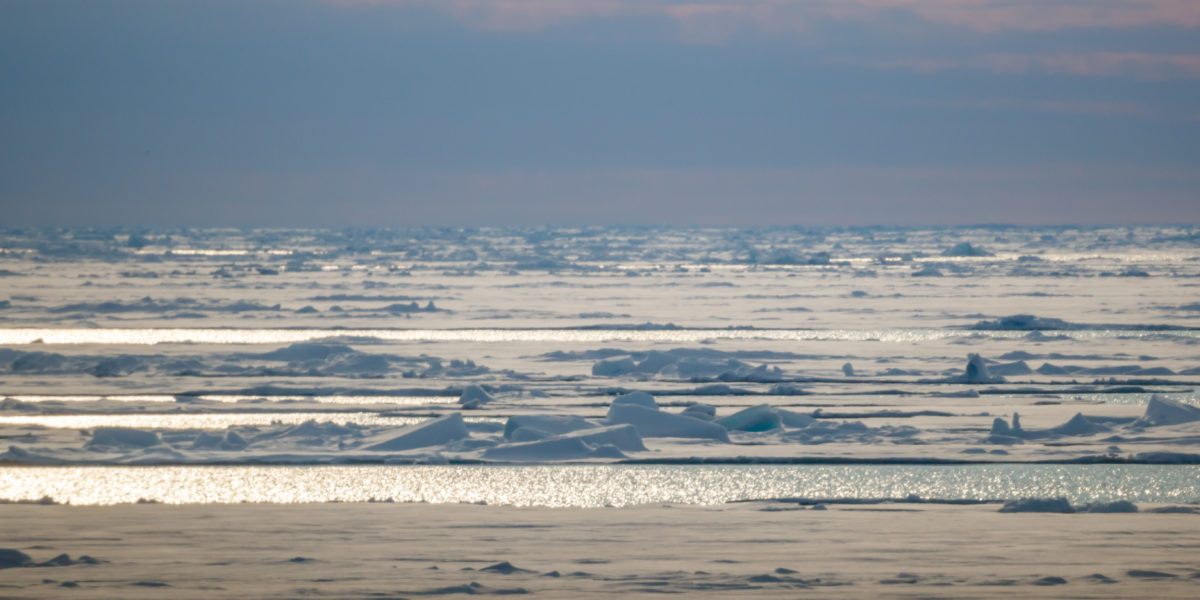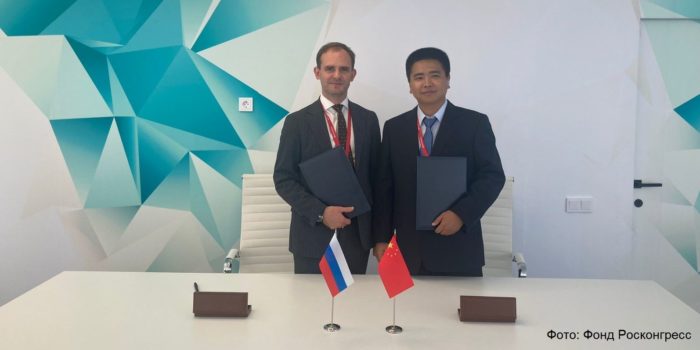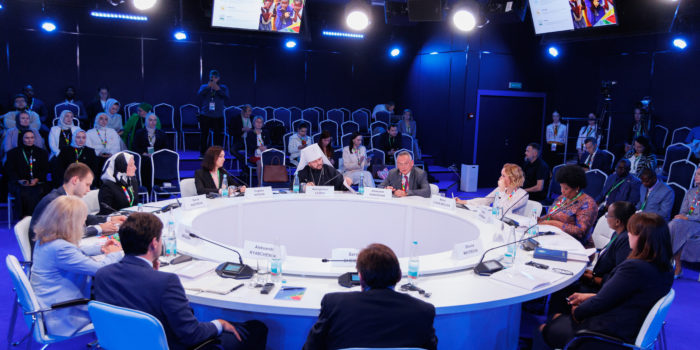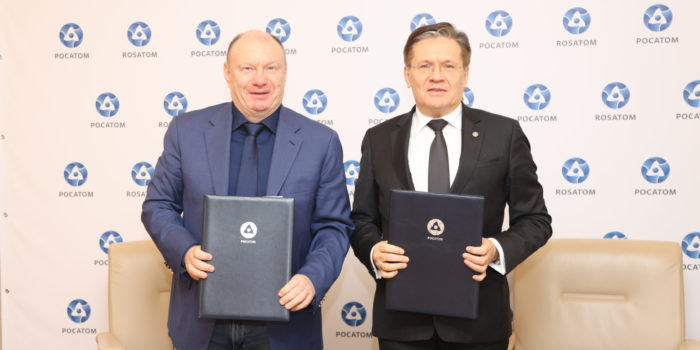Comprehensive development of the Arctic zone of the Russian Federation is a national strategic priority. To increase the Northern Sea Route (hereinafter the NSR) traffic is of paramount importance for fulfilling the cargo shipping tasks. The development of this logistics corridor is ensured due to the organization of regular cargo shipping, construction of new nuclear icebreakers and modernization of the relevant infrastructure. Rosatom companies are actively involved in this work.
In 2018, Rosatom was appointed the NSR infrastructure operator.
The comprehensive development of the Arctic and transformation of the NSR into a year-round transport and logistics route require safe and sustainable Arctic navigation, while the creation of a modern and efficient port infrastructure require constant monitoring of the condition of the NSR-adjacent water and terrestrial Arctic ecosystems.
To ensure the Arctic environment security is of key importance for the development of the region and is possible with a system approach, including both regulatory support and management, navigation and technological solutions, as well as operational interaction between authorities, natural resource users and the expert community.
One of the most effective tools for obtaining the necessary information about the environment in the Arctic region, its biodiversity and changes is continuous environmental monitoring with the greatest possible territorial coverage and use of modern technologies. The measures taken to identify, prevent and eliminate security threats, localize and mitigate their manifestation consequences, including remote environmental research methods, developed in accordance with generally accepted international standards facilitate timely forecasts and analysis of the state of the northern seas.
To ensure the regional environmental security considering global environmental changes and the NSR increasing navigation intensity, underway is the development of an extensive program for comprehensive and systematic environmental research.
An important step on this path is the joint project of the Lomonosov Moscow State University Marine Research Center (hereinafter LMSU MRC) and Rosatom, launched in 2021.
Project goals:
- the NSR sustainable navigation;
- comprehensive assessment of the current state of the NSR environment;
- studies of the impact of the Arctic shipping and infrastructure development on the Arctic biodiversity;
- development of a Comprehensive Program for the NSR Environment and Biodiversity Monitoring in accordance with best international practices.
The focus is on domestic and transit Arctic shipping, as well as the NSR port infrastructure at the stage of its construction and operation.
Fieldwork
Specialists carried out the fieldwork onboard the research vessels Aleksey Maryshev, Ivan Kireev, Professor Logachev, Kartesh, as well as the nuclear lighter carrier Sevmorput in the NSR water area in the summer-autumn season of 2021 and 2022. In 2023, the fieldwork was undertaken in the port waters of Amderma, Sabetta, Utrenny, Dikson, Dudinka, Khatanga, Tiksi and Pevek.
The network of comprehensive environmental monitoring stations has been developed based on the analysis of open literature and accumulated research data from past years. The stations are arranged considering the main traffic routes along the NSR and increased importance areas (walrus rookeries, areas of their feeding, migration and wintering, areas of birds molting, migration, breeding and feeding, etc.).
The work at the stations included the studies of atmospheric air, sampling of seawater, bottom sediments and microplastics, measurements of water column temperature and salinity, and registration of large debris. The study of the Arctic seas biota included sampling to analyze the quantitative and qualitative indicators of planktonic and benthic communities, as well as to study the presence of biological invasions, which plays an important role in gaining a comprehensive knowledge of the Arctic marine ecosystems. Observations were made of both marine mammals and birds.
Laboratory research and desk analysis of obtained data
Experts processed the samples and carried out further desk analysis of the materials obtained during the fieldwork in specialized laboratories in Moscow and St. Petersburg in the period from October to December in 2021, 2022 and 2023.
100 samples of atmospheric air, 400 samples of seawater were analyzed for more than 35 parameters and about 130 samples of bottom sediments were analyzed for more than 30 parameters. Hydrobiologists processed more than 1,200 plankton samples, including bacterioplankton, phytoplankton, zooplankton and ichthyoplankton, as well as about 600 benthos samples, including macrobenthos, meiobenthos, microphytobenthos.
According to the research, in the summer-autumn periods of 2021-2022, the estimated parameters for most indicators were characteristic of the seasons and regions of observation.
There are no registered concentrations exceeding the permissible maximum in the air, which could indicate the harmful impact of economic activities at the current stage of the NSR development and with the current shipping intensity.
Digital service
The project for environmental satellite monitoring digital service was implemented in respect of the NSR ship traffic and pollution in 2021-2023. The first results of the digital services were obtained.
During the monitoring period, the traffic density analysis was analyzed on the basis of automatic identification system (AIS) data.
International cooperation
The key condition for the sustainable development of the NSR navigation is its compliance with international environmental standards and best environmental practices.
LMSU MRC formed the international expert group for the NSR environmental monitoring (hereinafter IEG), which has become an international forum for discussing the project concept and its implementation.
The IEG mission is to evaluate the program of the NSR comprehensive environmental monitoring and develop recommendations for its improvement.
The IEG comprises experts on birds, zoo- and phytoplankton, marine mammals, fish, etc., representing more than 18 leading Russian and foreign institutions specializing in environmental protection and conservation of biological diversity including RAS P. P. Shirshov Institute of Oceanology, RAS A. N. Severtsov Institute of Ecology and Evolution, Arctic and Antarctic Research Institute, RAS Kola Scientific Center Murmansk Marine Biological Institute, etc. In three years, representatives of leading scientific institutions of Norway, Finland, France, Iceland, Great Britain, China, India, Egypt, Malaysia, Türkiye took part in the project.
Outcomes
The work resulted in a comprehensive program for monitoring the NSR environment and biodiversity.
The program includes:
- a system of actions to monitor and control the NSR environment taking into account Russian government, commercial, scientific and non-profit organizations as well as the foreign expert community;
- environmental monitoring subprograms including the definition of a set of mandatory factors and objects, parameters, methods, frequency of observations and work areas. The subprograms are intended for observing abiotic factors (atmospheric air, sea waters, sea ice, bottom sediments) and biological objects (bacterio-, phyto-, zooplankton, macrozoo-, microphytobenthos, ichthyofauna, avifauna, marine mammals);
- areas for monitoring and observing birds and marine mammals.
The project has not been stopped and will be continued in 2024. At the Eastern Economic Forum (EEF), in September 2023, Rosatom and LMSU MRC signed a document on continuation of their cooperation.
In 2024, the system of the NSR state environmental monitoring as an information basis for navigation environmental safety will be included in the unified system of state environmental monitoring as a separate subsystem.
In 2024, there will be carried an environmental monitoring in the port areas of the NSR and satellite monitoring including further development of the digital service. The development of the comprehensive monitoring program will be continued based on the analysis of the needs for monitoring outcomes; information support approaches and methods for the NSR environmental protection and security will be developed.
The information brochure Programme of Complex Research and Monitoring of Surface and Underwater Environmental Safety of the Northern Sea Route is available by link.





